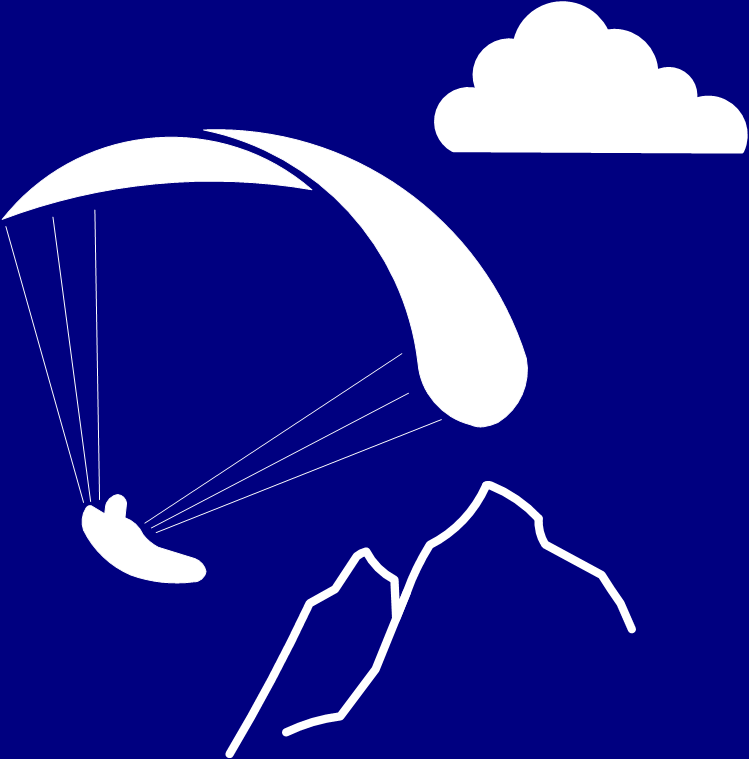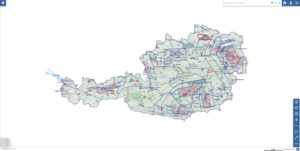Who among us has not yet had an encounter of the first kind (visual contact) with our flying colleagues, the glider pilots? In order to avoid an encounter of the second kind (physical contact), we should all adhere to the pre-flight rules. Achim Holzmann has explained this and other things clearly in a much-noticed video.
Time for me to summarise his findings from the cockpit in this report at the start of the session. In a calm voice from the cockpit of a glider, he explains on the flight to the Estergebirge, more precisely to the Wank, to fly a lap with us paragliders. From the cockpit, he explains the pre-flight rules to be observed by both pilots and the technical aids to help us avoid a collision.
Note: All of the following photos are screenshots from his video. The text was largely created from the transcript of the video and then summarised by ChatGPT.
Cockpit view
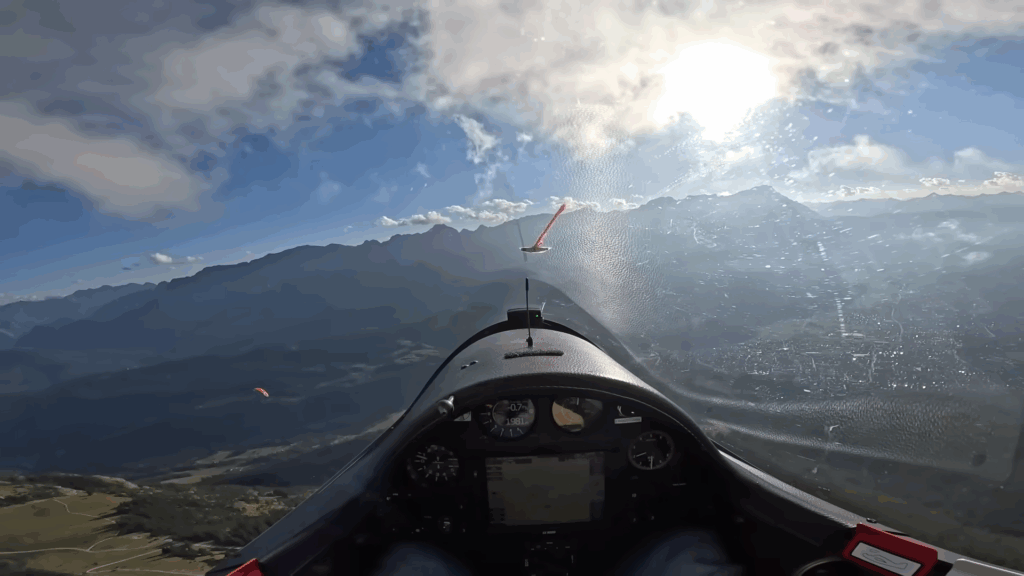
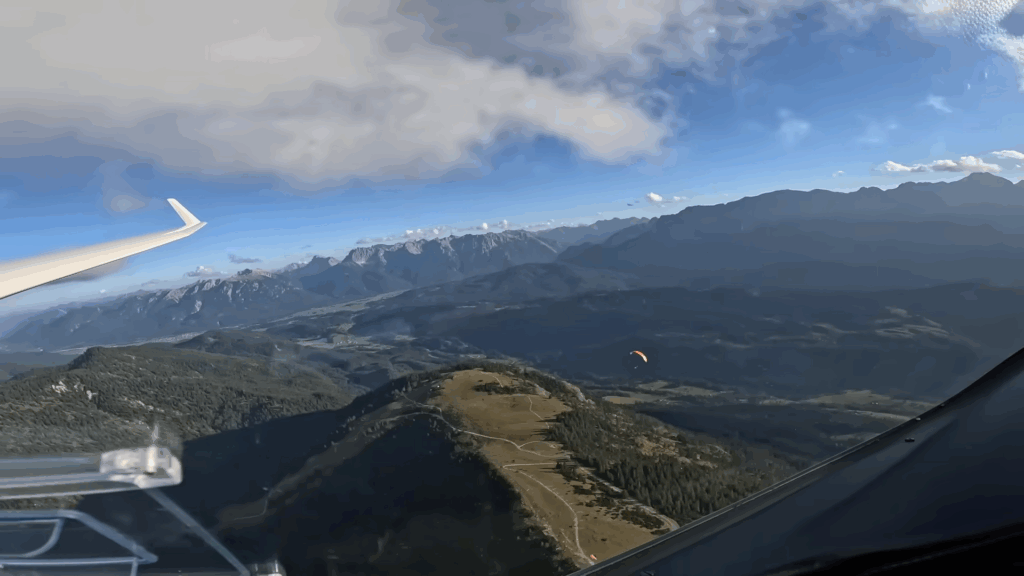
Paraglider pilots have very good all-round visibility, in contrast to glider pilots, who only have limited visibility downwards and forwards due to the cockpit. Direct sunlight makes it even more difficult to see outwards. Paragliders should bear this in mind, as they have an almost 360° all-round view in all directions.
Pre-flight rules
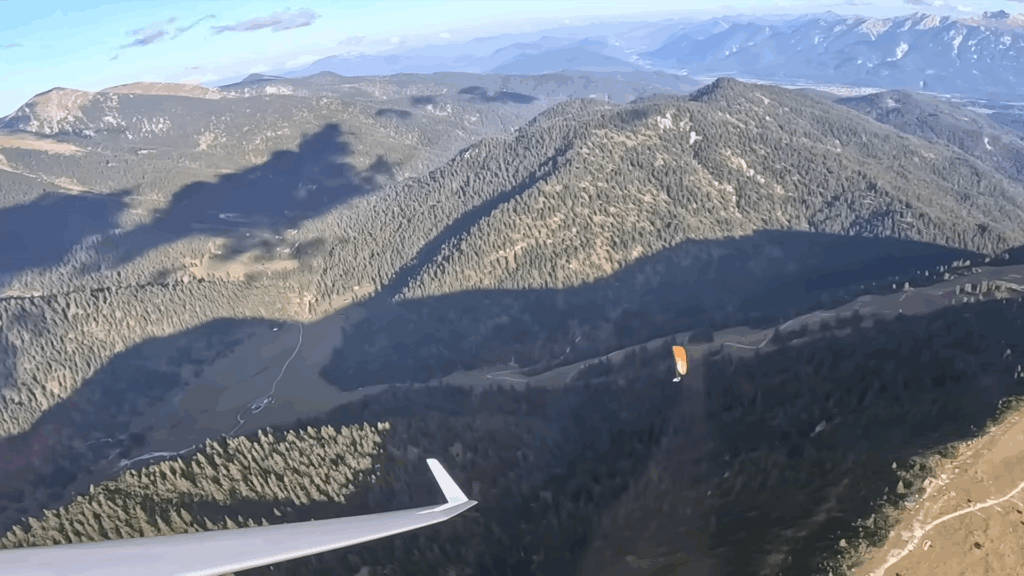
When flying in thermals, it can happen that gliders and paragliders share the same updraft. It doesn’t take much for this to work safely and smoothly – just a little consideration, clear rules and some flying experience.
A practical example: on the way towards Wank, Achim spots a red paraglider that is climbing nicely. Although paragliders are slower than gliders, this is not a problem as long as both keep to the direction of rotation in the thermal. In this case, both circle to the left – the paraglider pilot close in, the glider pilot further out. That way you don’t get in each other’s way.
The paraglider pilot appears experienced and is not rattled by a glider. The interaction in the air is relaxed – and it should be. You climb faster in a glider, so at some point the altitude automatically separates you.
Mutual consideration is the be-all and end-all
Important: Gliders should take care not to block the way out of the thermal for paragliders, especially just below the cloud base. Paragliders are significantly slower and cannot manoeuvre as flexibly. If they can’t find a way out, the worst case scenario is an unwanted cloud flight – and that can be dangerous.
So here’s a tip: as a glider pilot, get out of the thermal in good time so that paragliders can follow safely.
Pre-flight rules short & sweet
- In thermals, the following applies: the first to arrive determines the direction of rotation. Whoever comes later adapts – whether glider or paraglider.
- Mutual evasion: If two aircraft approach each other head-on, both must swerve to the right.
- On the slope: gliders are more manoeuvrable and should give priority to paragliders and keep a greater distance.
- Recognisability: Paragliders are colourful and highly visible – gliders, on the other hand, are more difficult to spot. So it’s better to take a closer look.
What definitely does not apply: rules such as “turn left on even days” are made up and have no place in the air. The decisive factor is always safety and avoiding conflicts – not any calendar theories.
Shared thermals – no problem with consideration
In practice, it has been shown that thermal flying with a glider and paraglider at the same time is perfectly possible if everyone follows the rules and shows consideration. Even if it is rather rare for paragliders to encounter a glider, it is quite common for gliders. This is because glider pilots are travelling faster, cover greater distances and therefore encounter paragliders that are flying in the same thermal more often.
FLARM and Fanet
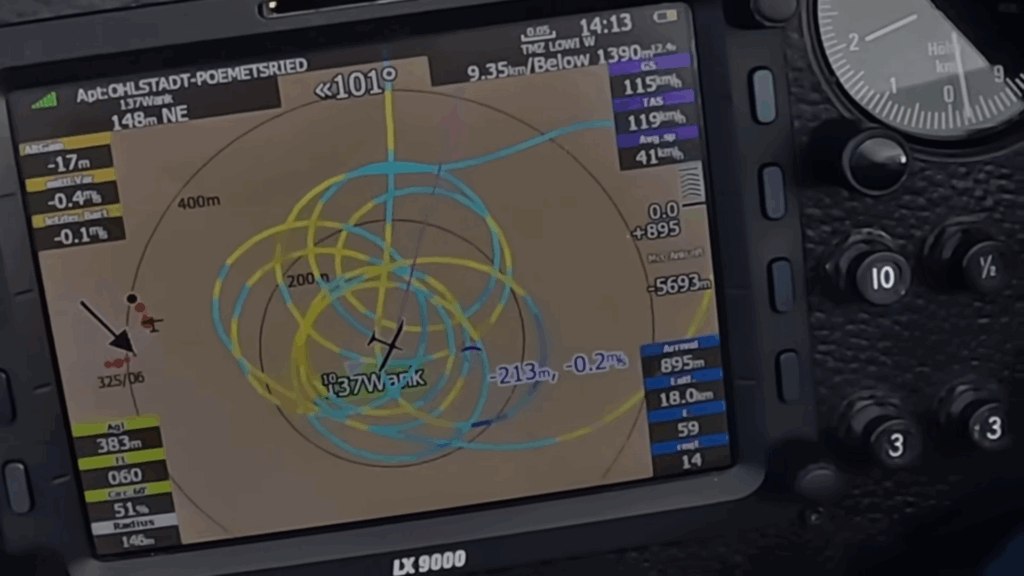

FLARM is an electronic collision avoidance warning system that has become established in gliding in particular, but also for motorised aircraft and increasingly also for paragliders. It ensures greater safety in the airspace – especially when many different aircraft are travelling.
How does FLARM work?
In the cockpit, FLARM displays other aircraft that are also equipped with FLARM – including flight direction and distance. If a collision course is imminent, the system emits a loud acoustic signal and indicates the direction to the other aircraft. This is the moment when you should actively look outwards and react.
Practical example: A blue dot on the display signals a paraglider with FLARM. If it gets too close to the glider pilot, the device warns them in good time – so the glider pilot can take evasive action or recognise where the other pilot is in good time. If a paraglider does not have FLARM, this warning does not materialise – in such cases, only mutual attention and the classic avoidance rules will help.
FLARM or FANET? Better both!
Many paraglider pilots today use devices with the FANET mesh protocol, which, however, is not recognised by most FLARM devices in gliding flight. So here’s a clear tip: anyone buying a new vario should make sure that it supports both FANET and FLARM. This is the only way for paragliders to be visible to gliders – and vice versa.
Speed camera coupled with FLARM
Paraglider pilots may have already noticed it: Many modern gliders are equipped with a small flasher – usually in the nose of the glider under the canopy. These flashers are linked to the FLARM system and only activate when another FLARM target is in the vicinity. A simple but effective method to be seen better in airspace.
Wake vortices
An often underestimated issue in the interaction between gliders and paragliders is wake turbulence, i.e. the air turbulence that an aircraft generates behind it. These can be more or less strong depending on the type of aircraft, flight attitude and weather conditions.
How strongly do you feel this as a paraglider pilot?
Difficult to say from the glider pilot’s point of view. Modern gliders with winglets and optimised wing profiles generally only generate very weak turbulence. You may hardly feel it under the glider – or not at all. It depends very much on distance, position and thermal conditions.
Wake vortices from gliders are generally not critical – especially with modern aircraft types with winglets. Nevertheless, the following applies: sufficient distance, mutual consideration and a good eye for each other’s position make flying together in thermals safe and relaxed.
